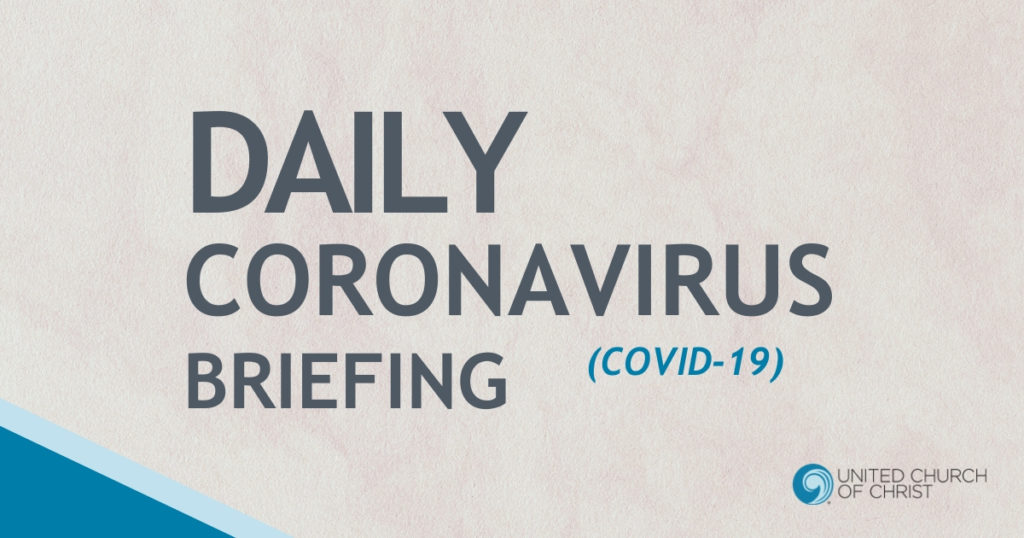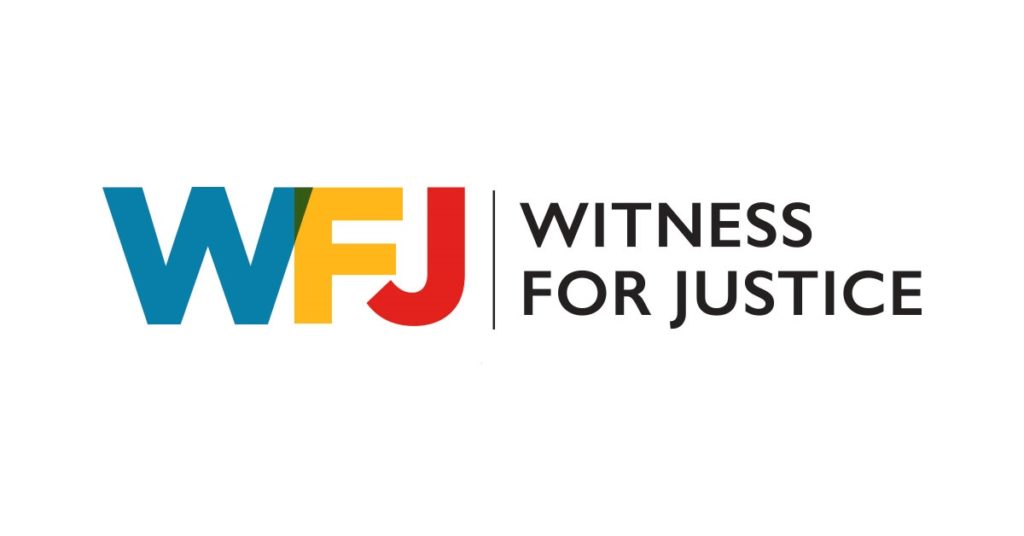Left Behind? Persons with Disabilities and COVID-19
United Church of Christ – Wider Church Ministries
Humanitarian Development Team
Coronavirus (COVID-19) Daily Briefing
Barbara T. Baylor, MPH – Temporary Health Liaison
Left Behind? Persons with Disabilities and COVID-19
“Americans with disabilities are largely left out of the U.S. coronavirus response despite being uniquely affected by the disease.” – Bonnielin Swenor, John Hopkins Epidemiologist
For people with disabilities, achieving health equity is an uphill battle even apart from COVID-19. But the pandemic is shining a light on the dangerous reality of medical discrimination for many people with disabilities in need of healthcare.
For example, as the COVID-19 pandemic began to overwhelm emergency rooms across the United States, some state policies on emergency care came under scrutiny for potentially discriminating against people with disabilities. One of those policies – the Alabama Department of Public Health’s 2010 emergency operations plan – stated that “persons with severe mental retardation [and] advanced dementia,” among others, “may be poor candidates for ventilator support.”
The Alabama Disabilities Advocacy Program filed a complaint with the U.S. Department of Health and Human Services (HHS) Office of Civil Rights. The plan was updated in February 2020, and no longer includes this language.
The HHS Office of Civil Rights promptly issued a statement informing all states that under U.S. law, no persons with disabilities should be denied medical care on the basis of stereotypes, assessments of quality of life, or judgments about a person’s relative “worth” based on such factors as disabilities or age.
People with disabilities face many challenges and barriers to COVID-19 care, including:
1. Access to testing.
For the more than 61 million American adults with disabilities, barriers to COVID-19 testing – including transportation challenges and inaccessibility of testing sites – can lead to delays in access to healthcare and to poor outcomes.
2. Communication.
Getting information can be more difficult for people with vision, hearing and cognitive disabilities, as popular news sources may not be accessible to the disability community.
3. Adopting recommended public health strategies.
Social distancing and washing hands, for example, are not always feasible for people with certain types of physical disabilities. Unfortunately, public health policies often do not consider people with disabilities, leaving a gap in guidance.
4. Equitable access to health care.
Lack of equitable access is a long-standing barrier worsened by COVID-19. This ranges from getting a coronavirus test to being seen in an emergency room. For example, drive-up testing may be impossible if you rely on state mobility services.
The COVID-19 crisis exposes underlying inequalities for women and girls with disabilities. It exacerbates forms of discrimination related to sexual and reproductive health, gender-based violence, legal protection, unpaid care and domestic work. Women and girls with disabilities who are migrants, refugees or from ethnic groups endure even more hardships and unequal treatment.
6. Difficulty accessing critical medical supplies.
Research on past pandemics shows that people with disabilities find it harder to access critical medical supplies, which can become even more challenging as resources become scarce.
7. Mental health challenges.
They report higher levels of social isolation and may experience intensified feelings of loneliness in response to physical distancing. This in turn has been associated with increases in other health problems according to the National Academies of Science, Engineering, and Medicine.
8. Lack of research.
Adequate research on the specific impact of COVID-19 on the disability community is not yet available, which may be a barrier to care and treatment. Data are needed on rates of infections, hospitalizations, outcomes and death disaggregated by disability, age, race and income to understand the impact of COVID-19 on this vulnerable group.
It is important not to confuse health status with disability, as many persons with disabilities are healthy. However, some do have underlying or secondary aspects of their disability, like suppressed immune systems, respiratory concerns or other acute health conditions that increase the risk of severe symptoms associated with COVID-19 concerns.
Unfortunately, being classified as “high risk” may be a barrier to COVID-19 care and can cause additional stress and fear as the subjective labeling of “high risk” may influence policies and decision-making related to access to care or equitable and fair treatment. According to recent survey of the National Disability Institute, more than 60 percent of respondents reported being “very concerned” about medical discrimination and how policies may prevent them from getting equitable and fair treatment. (Read more here.)
Allocation, including ventilators, may be discriminatory against patients with disabilities. The misconception that people with disabilities don’t have a high quality of life can result in their lives not being prioritized.
Health equity requires that everyone has the opportunity to attain their highest level of health. Inequities are created when barriers prevent individuals and communities from accessing these conditions and reaching their full potential. We achieve health equity when we value all people equally; optimize the conditions in which people are born, grow, live, work, learn, and age, and address social factors that influence health and are important in determining individual well-being and quality of life. Racism, discrimination and stereotyping affect how these social determinants are distributed.
People with disabilities often have not been considered in a disaster or pandemic planning. It is crucial, in COVID-19 care, to make sure that people with disabilities are being considered and that their needs do not fall through the cracks.
This July 26 will mark the 30th anniversary of the Americans with Disabilities Act. Let’s use the occasion as an opportunity to advocate that the perspectives of people with disabilities be included in the response to COVID-19 as we work together toward achieving health equity for all.
Other References:
United Church of Christ Disabilities Ministries Resources
Dearth of Disability-Related COVID-19 Data Can Confound Response Efforts
Leaving No One Behind: The COVID-19 Crisis through the Disability and Gender Lens
Centers for Disease Control – COVID-19: People with Disabilities
Related News
Celebrating Diversity, Equity, Inclusion, and Accessibility
In the beautiful diversity of humankind, we are invited to celebrate diversity, equity,...
Read MoreThe Gifts of Advent
One of my favorite seasons of the year is Advent, which often falls on the first Sunday after...
Read MoreLand, Artifacts, and Ancestors Back
Imagine one of your great grandparents toiled over a hand-written, illustrated copy of the...
Read More
